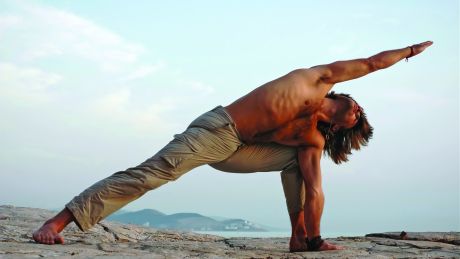How To Train Connective Tissue
Strength and conditioning expert Steve Maxwell explains how to train your body to stay strong in the future

Is gym training helping you stay free of sports injuries? It’s unlikely. Many injuries come from awkward collisions, falls and impacts that damage your joints. Gym training will make you stronger, but it won’t protect against these injuries, because you always use safe, specific movement patterns when you lift weights. All the calf raises in the world won’t help you if you roll your ankle.
I’m 52 years old and have been training in grappling-based sports including wrestling, judo and Brazilian jiu jitsu for over 30 years, all of which place considerable strain on your joints. Most of the guys I started training with have had hip and knee replacement operations, but I can still train and move like a 30-year-old. The reason? I’ve spent years training my connective tissue – ligaments, tendons and fascia – that surrounds my ankle, knee, hip, elbow and wrist joints.
Connective issues
I first came across connective tissue training through the Russian concept of ‘poisonous exercises’ , which place your joints in unnatural, stressful positions and force them to adapt without actually injuring them. It works like a vaccination that introduces a small amount of a disease into your body so it adapts to defend against it.
The key is to build up your connective tissue’s tolerance to these positions slowly, because too much strain too soon will lead to injury. If you imagine a pain scale where one feels fine and ten is agony, you should stop immediately when your discomfort level reaches four. Over time, your capacity to push these biomechanically bad positions further and hold them for longer will increase, significantly reducing the risk of injury when your joints are forced into these positions unexpectedly during sports.
Acid reflex
In addition to enhancing your connective tissue, poisonous exercises also recondition your nervous system so it doesn’t perceive these unnatural positions as a threat. This is important, because a lot of muscular injuries are the result of an overactive stretch reflex, where your body involuntarily contracts muscles if they’re placed in unfamiliar positions.
It’s impossible to injury-proof your body completely, but training your connective tissue will reduce the risk, and keep your joints functioning healthily into later life.
Sign up for workout ideas, training advice, reviews of the latest gear and more.
